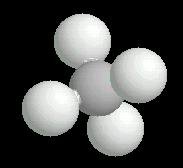
Methane was probably much more abundant in the low-O2
Archean/early Paleoproterozoic atmosphere, prior to 2.3 Ga, than it is
today. CH4 concentrations of 1000 ppm or more are predicted once
methanogenic bacteria had evolved. Greenhouse warming from this CH4 could
have been a major factor in offsetting reduced solar luminosity at that
time. However, if CH4 became more abundant than CO2, it would have
polymerized to form hydrocarbon smog in the stratosphere. This, in turn,
would have created an anti-greenhouse effect that cooled the surface. The
rise of O2 at 2.3 Ga wiped out most of this methane and may have triggered
the very deep (possibly global) Paleoproterozoic glaciations.
To join using a videoconferencing system:
Please RSVP to Mike Toillion (mike.toillion@nasa.gov) if you will be joining by Polycom.
To view the slides, connect to http://connect.arc.nasa.gov/uwseminar/
To join using a web browser:
The slides and audio/video for this meeting will be presented using Adobe Connect. To join the meeting, connect to:
http://connect.arc.nasa.gov/uwseminar/
If you are having problems connecting, you can try joining http://connect.arc.nasa.gov/uwseminar/?launcher=false, or rebooting your computer, or try joining from another network.
 Getting Under Europa’s Skin
Getting Under Europa’s Skin Tracing Formation and Evolution of Outer Solar System Bodies Through Stable Isotopes and Noble Gas Abundances
Tracing Formation and Evolution of Outer Solar System Bodies Through Stable Isotopes and Noble Gas Abundances Photosynthesis, a Planetary Revolution
Photosynthesis, a Planetary Revolution Xenon: King of the Gases
Xenon: King of the Gases